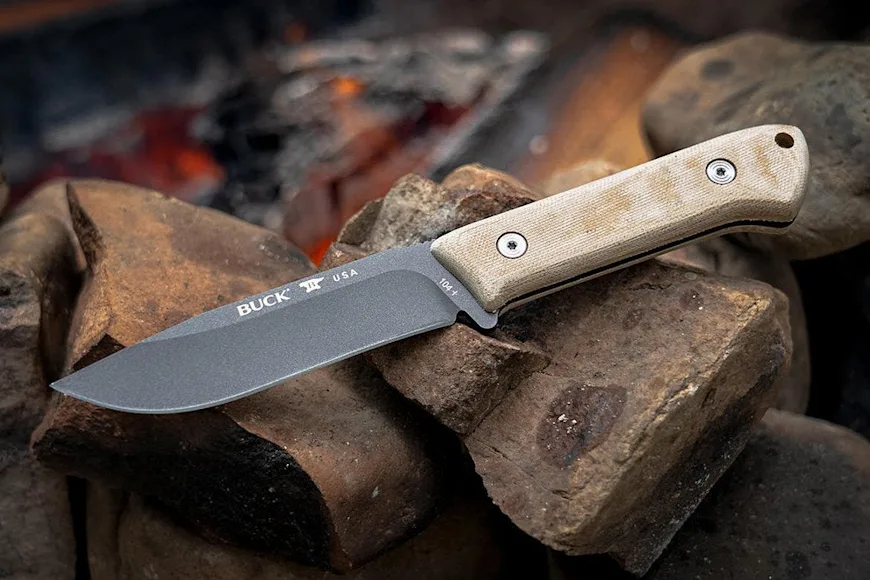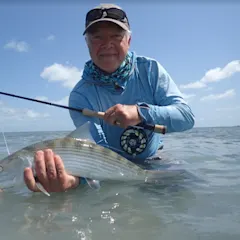_We may earn revenue from the products available on this page and participate in affiliate programs. Learn more ›
_
The sleek lines of a fixed-blade knife speak to the essence of outdoors competence. Fixed-blade knives consist of a blade, a handle, and a tang, which is the extension of the blade that carries into the handle. They are easy to clean and quick to deploy, with no moving parts to break or become gunked up. A strong fixed-blade knife can be batoned (struck on the spine) through wood. It can be twisted and torqued. Its strength comes from its seeming simplicity—although a cheaply made fixed-blade is no bargain at all. No fixed-blade knife is built with all the elements listed here, and many of them are found on folding knives, too. How designers choose among such a broad menu of options is what makes knives so endlessly fascinating.

Courtesy of Weldon Owen
POINT: Also called the tip.The sharper the point, the better a knife’s piercing ability—though at the expense of tip strength.
SWEDGE: A ground edge on the spine near the tip. A sharpened swedge increases piercing ability. Most are unsharpened and purely decorative.
BELLY: The curved section of the edge. A knife with lots of belly is useful for long, sweeping cuts like those used for skinning animals.
CHEEK: The side of the blade, also called the face.
EDGE: The sharpened cutting surface.
SPINE: The unsharpened back of the blade.
FULLER: Often called a blood groove, this channel runs parallel to the spine. The fuller functions like an I-beam, reducing weight and adding strength.
PLUNGE LINE: Where the cheek’s grind meets the edge bevel.
JIMPING: Ground notches in the blade spine, and sometimes the handle, that provide traction for the user’s finger.
HEEL: A general term for the section of the blade where it meets the handle or guard.
CHOIL: An unsharpened, scalloped indent where the blade meets the handle. A large choil can be handy as a finger grip. Smaller choils serve as a stop for sharpening devices to protect the guard or handle.
RICASSO: The short, unsharpened part of the blade between the edge bevel and the handle or guard. The ricasso allows for sharpening of the full blade without risk of marring the handle.
QUILLON: An elongated point on the guard that provides added protection. Fighting and tactical knives often have double quillons, one on each side of the blade.
GUARD: Designed to keep the hand from slipping onto the blade. Guards range in size, though many modern designs lack them.
BOLSTER: A thick metal shoulder at the front of the handle, or separate pieces that sandwich the tang. Bolsters can be either separate pieces of metal or part of the blade and tang.
POMMEL: Also called the butt, this is the end of the handle. A stout pommel can be used to pound stakes.
This article was adapted from Field & Stream’s Total Camping Manual
.



